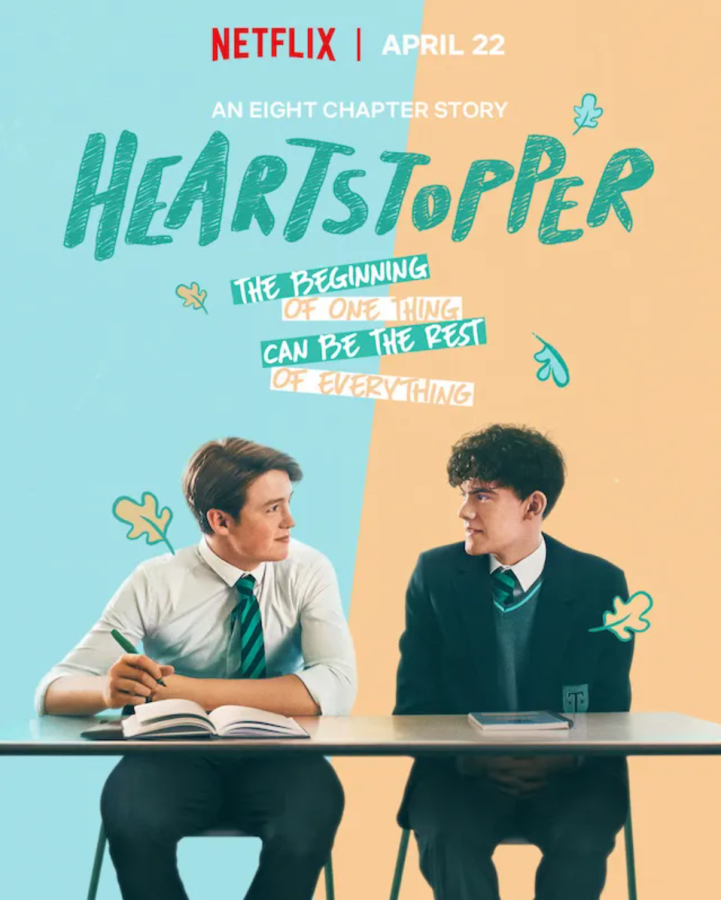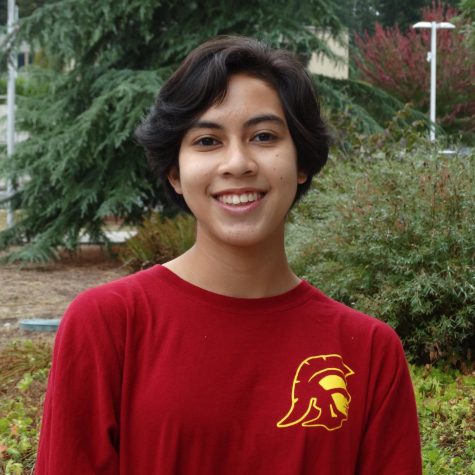“Heartstopper” is the Feel-Good LGBTQ Show That We All Needed
April 28, 2022
On April 22, Netflix released the entire first season of “Heartstopper,” a TV series based on the Webtoon by Alice Oseman. The social media hype for “Heartstopper” in the weeks prior to its release was staggering. Between all the buzz online and the fact that shows centered around queer youth are few and far between, I was compelled to watch it, and it exceeded all my expectations.
“Heartstopper” follows the story of Nick Nelson and Charlie Spring as they battle the challenges of high school (or the English equivalent), discover facets of their identity, and fall in love. It has the premise of a typical coming-of-age story, but the journeys of both characters are handled with a wholesome, tear-jerking delicacy that is entirely unique, and for that reason, “Heartstopper” quickly carved out a special place in my heart.
Frequently, shows spotlighting queer characters are riddled with angst, but while “Heartstopper” does touch on homophobia and other heavy themes, these topics do not take precedent over Nick and Charlie’s relationship or their individual journeys. The “comforting realism” of the storytelling adds an overarching hopefulness to the entire series, showing that bigotry and pain can be secondary to life and love. This message hits hard for queer audiences especially, and it is why I was reduced to tears many times despite the lightness of the story. Fundamentally, “Heartstopper” is a show written for queer people, by queer people, filled with queer actors, and that is why I am so in love with it.
Speaking of actors, the cast of “Heartstopper” is filled with young, up-and-coming actors overflowing with talent. It is refreshing to see teenagers played by actual teenagers rather than 27-year-olds, and queer characters played by queer actors. Not only is the cast accurate to the comic physically, but each actor also portrays their character with astounding authenticity and dedication to the source material—I am not exaggerating when I say that Kit Connor is the perfect Nick Nelson.
Furthermore, all the details make this series even more unforgettable. The video game-like animations that are superimposed over some scenes are a cute and clever way of conveying the character’s emotions to the audience alongside the actors’ performance. Also, whoever scored “Heartstopper” deserves a raise because the series is littered with songs instantly recognizable to teenagers—queer youth especially. Baby Queen, girl in red, Rina Sawayama, Smoothboi Ezra; the songs of these artists already populate my playlists, so I was ecstatic to hear their tracks alongside this beautiful story.
One thing the series does struggle with, though, is pacing. The plot moves at a hurried speed as if the producers were attempting to cram as much of Nick and Charlie’s story into eight episodes as possible. If this is because Netflix has a disheartening tendency to cancel even well-beloved shows after their second season, I would not blame them, but as a result, the show does not give enough time for the viewers to emotionally recover from each scene. I only survived because I watched it alone and utilized the pause button with wild abandon.
Ultimately, while the Webtoon is my preferred version of Nick and Charlie’s story, the Netflix show did add some amazing elements that enhanced the story as a whole. I am 100 percent with all the other “Heartstopper” fans when they say, “We need a season two!”



